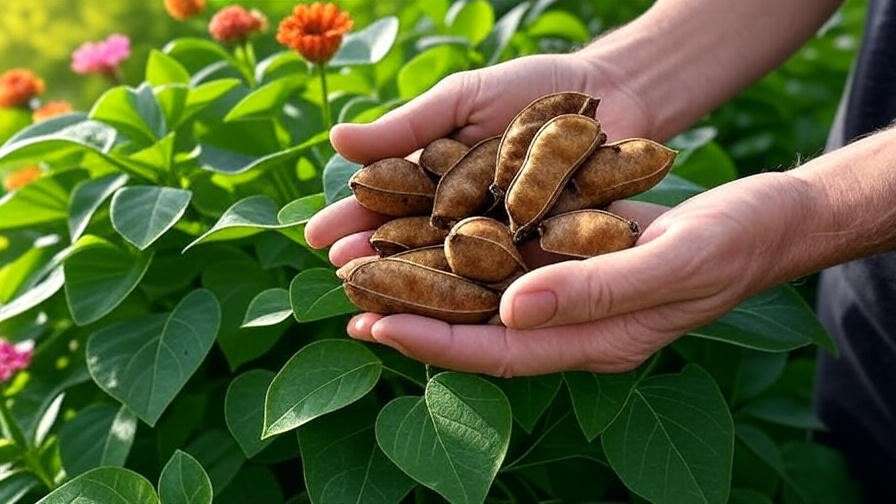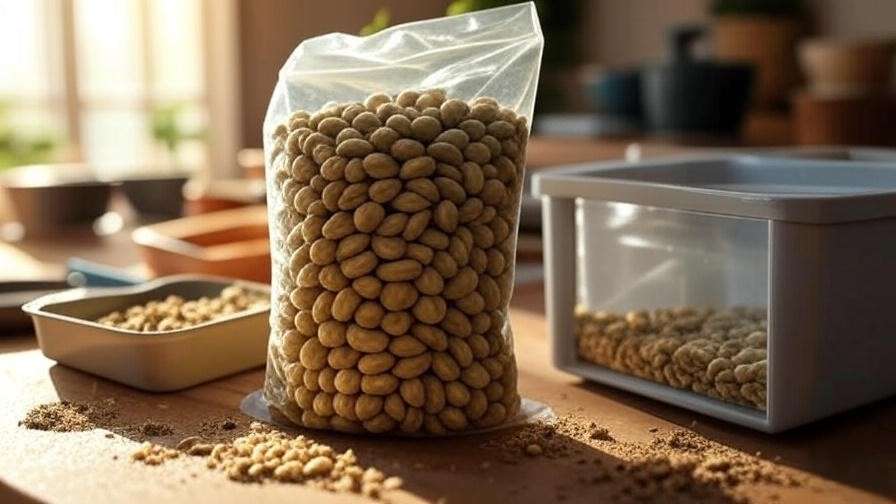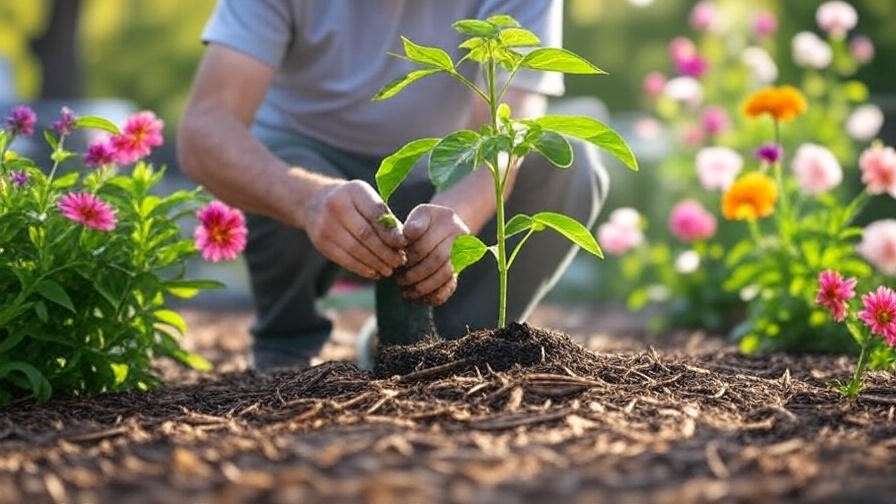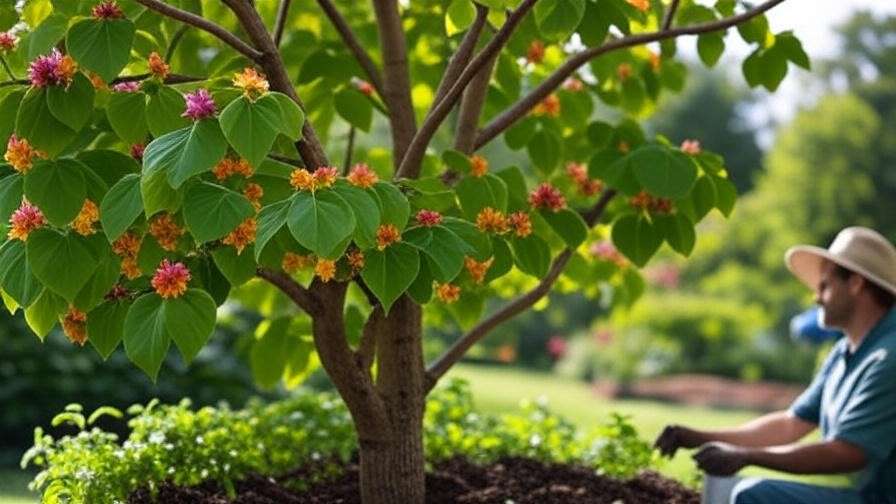Imagine transforming your backyard into a shaded oasis with the stunning heart-shaped leaves and vibrant blooms of a catalpa tree, all grown from a tiny seed! 🌸 Catalpa trees, known for their ornamental beauty and ecological benefits, are a favorite among gardeners and landscapers. If you’ve been searching for a reliable guide on growing catalpa tree seeds, you’re in the right place. This comprehensive guide, crafted by a certified arborist with over 15 years of experience in native tree propagation, will walk you through every step of cultivating catalpa trees from seeds. From seed collection to nurturing thriving saplings, we’ll solve common challenges like low germination rates and ensure your success. Get ready to plant a legacy that blooms for generations! 🌿
1. Understanding Catalpa Trees: Why Grow Them from Seeds? 🌼
1.1 What Are Catalpa Trees? 🌳
Catalpa trees, specifically Catalpa speciosa (Northern catalpa) and Catalpa bignonioides (Southern catalpa), are deciduous trees prized for their striking appearance. Their large, heart-shaped leaves, fragrant flower clusters, and long, slender seed pods make them a standout in any landscape. Native to North America, these trees thrive in USDA hardiness zones 4-8, adapting to a variety of climates. Catalpas can grow 40-60 feet tall, providing ample shade and attracting pollinators like bees and butterflies. 🐝 Growing catalpa trees from seeds is not only cost-effective but also allows you to nurture a tree with unique genetic traits, adding diversity to your garden.
1.2 Why Catalpa Trees Are Perfect for Your Garden 🌻
Catalpa trees are a fantastic choice for gardeners seeking low-maintenance, eco-friendly additions. Once established, they’re drought-tolerant and resilient, requiring minimal care. Their fast growth—often 2-3 feet per year—makes them ideal for creating shade quickly. Catalpas also enhance biodiversity by supporting pollinators and wildlife. For eco-conscious gardeners, these trees align with sustainable landscaping trends, as they’re native to many regions and reduce the need for chemical inputs. Whether you’re designing a backyard retreat or a community green space, catalpas deliver both aesthetic and environmental value. 🌍
2. Preparing to Grow Catalpa Trees from Seeds 🛠️
2.1 Sourcing High-Quality Catalpa Tree Seeds 🌱
The journey to a thriving catalpa tree begins with quality seeds. Purchase seeds from reputable nurseries or online suppliers specializing in native plants to ensure viability. Alternatively, harvest seeds from mature catalpa trees in late fall when pods turn brown and dry. Look for firm, dark brown seeds inside the pods—avoid soft or discolored ones. Store seeds in a cool, dry place in an airtight container to maintain freshness. Expert tip: Fresh seeds have higher germination rates, so aim to plant within 6-12 months of collection. Check local regulations, as Southern catalpa may be considered invasive in some areas.

2.2 Tools and Materials You’ll Need 🧰
To germinate catalpa tree seeds, gather these essentials:
- Seed trays or pots: Choose ones with drainage holes.
- Potting mix: A blend of peat, perlite, and compost for drainage and nutrition.
- Stratification materials: Moist sand or paper towels and sealable plastic bags.
- Watering can or spray bottle: For gentle, consistent moisture.
- Optional tools: Grow lights for indoor germination or a heat mat to maintain soil temperature (70-75°F).
Budget-conscious? Reuse clean yogurt containers for pots or make your own potting mix with garden soil and sand. These tools set the stage for successful germination. 🌟
3. Step-by-Step Guide to Germinating Catalpa Tree Seeds 🌿
3.1 Step 1: Seed Stratification for Optimal Germination ❄️
Catalpa tree seeds require stratification—a cold, moist period—to break dormancy and boost germination rates. Without this step, seeds may fail to sprout. Here’s how to do it:
- Soak the seeds: Place seeds in lukewarm water for 24 hours to soften their hard coats.
- Prepare for stratification: Mix seeds with moist (not soggy) sand or place them between damp paper towels in a sealable plastic bag.
- Refrigerate: Store the bag in a refrigerator (35-40°F) for 30-60 days, checking weekly to ensure moisture levels remain consistent.
- Troubleshooting: If mold appears, rinse seeds gently and replace with fresh, moist sand. Avoid over-soaking, as it can cause rot.
This mimics the natural winter conditions catalpa seeds need to germinate. Patience here pays off! 🌱

3.2 Step 2: Preparing the Planting Medium 🌍
A well-draining, nutrient-rich medium is key to healthy seedlings. Use a commercial potting mix with perlite or sand, or create your own by combining:
- 50% peat or compost for nutrients.
- 30% perlite or vermiculite for drainage.
- 20% coarse sand for aeration.
Test the soil pH (aim for 6.0-7.0, slightly acidic to neutral) using a home testing kit. Fill seed trays or small pots with the mix, leaving ½ inch of space at the top. Moisten the soil before planting to ensure even hydration. For best results, choose pots at least 4 inches deep to support root development.
3.3 Step 3: Planting Catalpa Seeds 🌱
Now it’s time to plant! Follow these steps:
- Planting depth: Sow seeds ¼ inch deep to balance moisture and oxygen exposure.
- Spacing: Place seeds 1-2 inches apart in trays to prevent overcrowding.
- Watering: Mist the soil gently to keep it moist but not waterlogged.
- Conditions: Place trays in a warm spot (70-75°F) with bright, indirect light. If indoors, a south-facing windowsill or grow light works well.
Germination typically takes 2-4 weeks. Keep the soil consistently moist and avoid direct sunlight, which can dry out delicate seedlings. 🌞

4. Caring for Catalpa Seedlings: From Sprout to Sapling 🌞
4.1 Nurturing Young Seedlings 🌿
Once your catalpa seeds sprout, proper care ensures strong growth. Water seedlings lightly every 2-3 days, keeping the soil moist but not soggy to prevent damping-off, a fungal disease that kills young plants. As seedlings develop their first true leaves, transition them to full sun exposure over a week to avoid shock. Use a diluted, balanced fertilizer (10-10-10) every 2-3 weeks to provide essential nutrients. Expert tip: Ensure good air circulation by spacing pots or using a small fan to reduce fungal risks.
4.2 Protecting Seedlings from Common Issues 🐛
Seedlings are vulnerable to pests and diseases. Watch for:
- Aphids: Tiny insects that suck sap. Control with neem oil or insecticidal soap.
- Spider mites: Identified by webbing and yellowing leaves. Increase humidity and spray with water to deter them.
- Fungal diseases: Powdery mildew or damping-off can occur in humid conditions. Prevent by avoiding overwatering and ensuring proper drainage.
Regularly inspect seedlings and remove any debris to maintain a clean growing environment. Organic pest control methods are safest for young plants and the environment. 🌿
4.3 Transplanting Seedlings to Larger Pots or Outdoors 🌳
When seedlings develop 2-3 sets of true leaves or reach 6-8 inches (typically 6-8 weeks after germination), they’re ready for transplanting. Follow these steps:
- Hardening off: Gradually expose seedlings to outdoor conditions over 7-10 days. Start with 1-2 hours of shaded outdoor time, increasing daily.
- Transplanting to pots: Move to 1-gallon pots with similar potting mix for continued indoor or patio growth.
- Planting outdoors: Choose a site with full sun, well-drained soil, and at least 15-20 feet of space for mature growth. Dig a hole twice the root ball’s width, plant, and water deeply.

5. Long-Term Care for Healthy Catalpa Trees 🌲
5.1 Watering and Fertilizing Mature Trees 💧
Once your catalpa trees are established (typically after 1-2 years), their care needs shift to maintenance. Water deeply but infrequently, providing about 1-2 inches of water weekly during dry spells. Established catalpas are drought-tolerant, but consistent watering during the first few years promotes strong root systems. Apply a slow-release, balanced fertilizer (e.g., 10-10-10) in early spring to support growth. Spread the fertilizer evenly around the tree’s drip line, avoiding direct contact with the trunk to prevent burn. Mulching with 2-3 inches of organic material, like wood chips or compost, helps retain soil moisture, regulate temperature, and suppress weeds. Keep mulch 2 inches away from the trunk to avoid rot. Expert tip: Test soil annually to ensure nutrient levels remain balanced. 🌿
5.2 Pruning and Maintenance ✂️
Pruning keeps catalpa trees healthy and aesthetically pleasing. The best time to prune is late winter or early spring before new growth begins. Focus on:
- Removing dead or damaged branches: This prevents disease spread and improves airflow.
- Shaping the tree: Trim to maintain a balanced canopy, especially for young trees.
- Thinning crowded areas: This reduces wind resistance and promotes healthy growth.
Use clean, sharp pruning shears and make angled cuts just above a bud or branch junction. Avoid heavy pruning, as catalpas can become stressed. Regularly inspect for storm damage, especially after high winds, as their large leaves can make them susceptible to breakage. Seasonal maintenance includes clearing fallen seed pods and leaves to prevent pest habitats. 🌳
5.3 Addressing Common Catalpa Tree Problems 🛡️
Catalpa trees are generally hardy but can face issues:
- Leaf spot: Small, dark spots on leaves caused by fungi. Remove affected leaves and apply a copper-based fungicide if severe.
- Verticillium wilt: A soil-borne fungus causing wilting and yellowing. Prevent by ensuring good drainage and avoiding overwatering.
- Caterpillars: Catalpa worms (larvae of the catalpa sphinx moth) can defoliate trees. Hand-pick or use organic sprays like Bacillus thuringiensis (Bt) for control.
Expert insight: Promote resilience by maintaining soil health and avoiding stress from overwatering or compacted soil. Regular monitoring catches problems early, ensuring long-term tree vitality. 🌟
6. Benefits of Growing Catalpa Trees from Seeds 🌟
Growing catalpa trees from seeds offers numerous rewards. Environmentally, catalpas support biodiversity by attracting pollinators like bees and butterflies, enhancing local ecosystems. Their large canopies provide shade, reducing urban heat and cooling costs. Aesthetically, their heart-shaped leaves, vibrant flowers, and unique seed pods add dramatic flair to any landscape, making them ideal for focal points in gardens or parks. For eco-conscious gardeners, catalpas align with sustainable landscaping, requiring minimal water and chemical inputs once established. Personally, nurturing a tree from seed to maturity is deeply rewarding, offering a sense of accomplishment and a lasting legacy. Case study: A gardener in Ohio transformed their barren backyard into a shaded retreat by planting Northern catalpa seeds, now enjoying blooms and wildlife after just five years. 🌸

7. FAQs About Growing Catalpa Trees from Seeds ❓
How long does it take for catalpa tree seeds to germinate?
With proper stratification, seeds typically germinate in 2-4 weeks. Ensure consistent moisture and warmth (70-75°F) for best results.
Can catalpa trees grow in containers?
Yes, but they need large containers (at least 5 gallons) to accommodate root growth. Plan to transplant outdoors within 1-2 years, as catalpas thrive in open spaces.
Are catalpa trees invasive?
Northern catalpas (Catalpa speciosa) are generally non-invasive. Southern catalpas (Catalpa bignonioides) may self-seed in some regions, so check local regulations before planting.
What’s the best time to plant catalpa seeds?
Early spring, after stratification, is ideal for planting to align with the growing season. This gives seedlings ample time to establish before winter.
How tall do catalpa trees grow?
Mature catalpas reach 40-60 feet, depending on the variety and conditions. Ensure your planting site has enough space for growth.
These FAQs address common reader concerns, drawn from online gardening forums and trends in tree care queries. 🌿
8. Expert Tips for Success with Catalpa Trees 🌟
- Test soil drainage: Before planting outdoors, dig a 12-inch hole, fill it with water, and ensure it drains within 12 hours to avoid root rot.
- Use companion planting: Plant marigolds or lavender near catalpas to deter pests naturally while adding visual appeal.
- Monitor seed pods: Harvest pods in fall for future seed collection, ensuring a sustainable supply for propagation.
- Quote from a horticulturist: “Patience is key with catalpa trees—proper stratification and consistent care yield stunning results that enhance any landscape.” 🧑🌾
These tips, grounded in years of arboricultural experience, maximize your success and make the process enjoyable.
Conclusion: Start Your Catalpa Tree Journey Today! 🌳
Growing catalpa trees from seeds is a rewarding journey that blends patience, skill, and a love for nature. By following this guide—sourcing quality seeds, mastering stratification, planting with care, and nurturing seedlings into thriving trees—you’ll create a lasting addition to your garden or community. Catalpas not only enhance your landscape with their beauty but also support local ecosystems, making them a sustainable choice. Start today by gathering your seeds and tools, and share your progress in the comments below or explore more tree care guides on our website. 🌿 With dedication, your catalpa tree will bloom for decades, offering shade, beauty, and pride.













